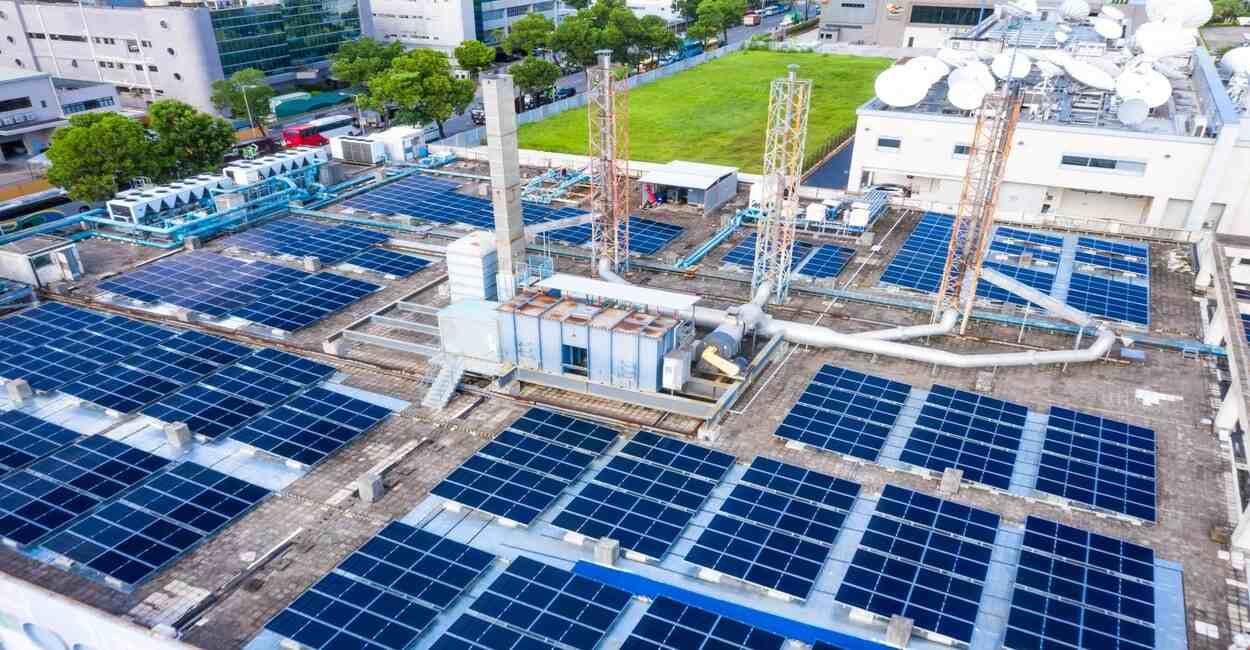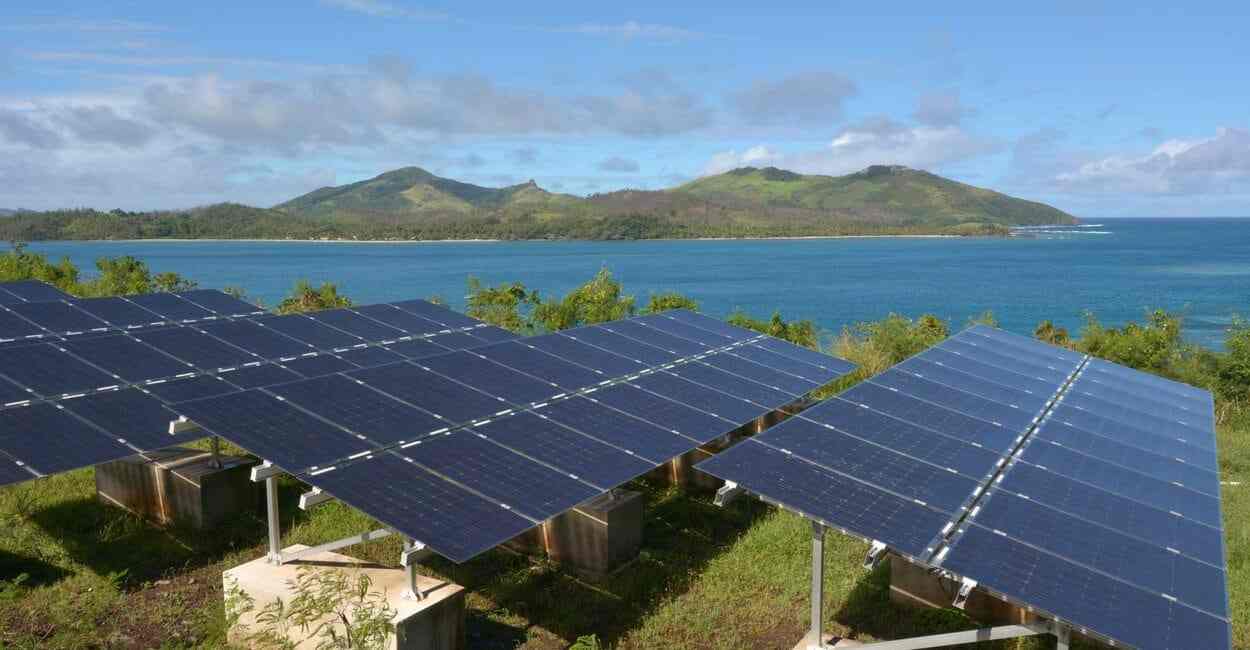The Benefits and Challenges of Solar-Powered Microgrids

Solar-powered microgrids offer a range of benefits and challenges, some of which are discussed below:
Benefits of Solar-Powered Microgrids
Sustainability: One of the main benefits of solar-powered microgrids is that they rely on renewable energy, making them more sustainable than traditional power sources such as coal or natural gas.
Cost-effectiveness: Solar-powered microgrids can be more cost-effective than traditional power sources, as they do not require expensive transmission lines and are easier to install.
Increased energy access: Microgrids can provide access to electricity for remote or underserved communities, where it may not be feasible or cost-effective to connect to a centralized power grid.
Energy security: Microgrids can provide a reliable source of energy in the event of power outages or other disruptions to the main grid.
Improved grid stability: Solar-powered microgrids can help to stabilize the main power grid by providing distributed energy resources that can respond to changes in demand and supply.
Challenges of Solar-Powered Microgrids
High upfront costs: The initial costs of building a solar-powered microgrid can be high, making it difficult for some communities or businesses to invest in the technology.
Limited energy storage: Microgrids are limited by the amount of energy they can store, which can limit their ability to provide reliable power during extended periods of low solar radiation.
Technical expertise: Building and maintaining a microgrid requires technical expertise that may not be available in some communities or businesses.
Regulatory hurdles: Microgrids may face regulatory hurdles, such as interconnection requirements and utility tariffs, that can make it difficult to connect to the main grid or sell excess energy back to the utility.
Weather dependence: The amount of power that a solar-powered microgrid can generate is dependent on weather conditions, making it less predictable than traditional power sources.
Overall, solar-powered microgrids offer a promising solution for increasing access to sustainable energy, but there are still challenges that need to be addressed in order to fully realize their potential.
How Solar-Powered Microgrids For Energy Access are being used?
Solar-powered microgrids can be a game-changer for increasing energy access in remote or underserved communities. Here are some of the key ways in which solar-powered microgrids can help to provide energy access:
Off-grid power: Solar-powered microgrids can provide power to communities that are not connected to the main power grid, allowing them to access electricity for basic needs such as lighting, cooking, and communication.
Reduced reliance on fossil fuels: Microgrids can reduce reliance on fossil fuels, which can be expensive and environmentally damaging, by providing a sustainable source of energy.
Reliable power: Solar-powered microgrids can provide reliable power, reducing the frequency and duration of power outages that can have a significant impact on communities.
Scalability: Solar-powered microgrids can be scaled up or down depending on the needs of a particular community, making them a flexible and adaptable solution.
Job creation: Building and maintaining solar-powered microgrids can create jobs in local communities, helping to support economic development.
Improved health outcomes: Access to electricity can improve health outcomes by enabling access to medical equipment and refrigeration for medicines.
Education: Access to electricity can also improve education outcomes by enabling students to study at night and access online learning resources.

While solar-powered microgrids offer many benefits for increasing energy access, there are also challenges to overcome, including the high upfront costs of building and maintaining a microgrid, limited energy storage capacity, and regulatory hurdles. However, with the right policies and support, solar-powered microgrids can play a critical role in expanding energy access and promoting sustainable development.
Some of the Decentralized Energy Systems
Decentralized energy systems refer to smaller-scale energy systems that generate power closer to the point of use, as opposed to centralized systems that generate power at large-scale power plants and transmit it over long distances to consumers. Here are some of the key features and benefits of decentralized energy systems:
Distributed generation: Decentralized energy systems typically rely on distributed generation, where power is generated by multiple small-scale sources, such as solar panels or wind turbines, instead of a single large-scale power plant.
Resilience: Decentralized energy systems can be more resilient in the face of power outages or natural disasters, as power is generated and distributed locally, reducing the impact of disruptions to the larger power grid.
Energy efficiency: Decentralized energy systems can be more energy-efficient than centralized systems, as they generate power closer to the point of use, reducing transmission losses and increasing overall efficiency.
Environmental benefits: Decentralized energy systems can reduce greenhouse gas emissions and other pollutants by relying on renewable energy sources and promoting energy efficiency.
What is the Importance of Solar-Powered Off-Grid Systems?
A solar-powered off-grid system is a self-sustaining system that generates and stores electricity without relying on the traditional power grid. These systems typically use solar panels to capture sunlight and convert it into electricity, which is then stored in batteries for use at a later time.
Off-grid solar systems are commonly used in remote locations where traditional power lines are not available or where it is not economically feasible to connect to the grid. These systems can also be used as backup power sources for homes or businesses in areas that experience frequent power outages.
The components of a solar-powered off-grid system typically include solar panels, a charge controller, batteries, an inverter, and sometimes a generator for backup power. The solar panels capture sunlight and convert it into electricity, which is then sent to the charge controller to regulate the charging of the batteries. The batteries store the electricity for later use, and the inverter converts the stored DC power into AC power, which can be used to power appliances and electronics.
One important consideration when designing a solar-powered off-grid system is the sizing of the components. The size of the solar panel array and battery bank must be large enough to meet the electricity needs of the home or business, while also taking into account factors such as the climate and weather patterns of the area.
Overall, solar-powered off-grid systems can be a cost-effective and environmentally friendly solution for powering homes, businesses, and other facilities in remote locations or in areas with unreliable power grids. However, careful planning and installation are essential to ensure the system is properly sized and configured for optimal performance and longevity.

What are Solar Energy And Local Power Grids?
Solar energy can play a significant role in local power grids, particularly in areas with high solar irradiation and where local power demand can be met through solar energy generation.
Local power grids, also known as microgrids, are small-scale power grids that can operate independently or in parallel with the main power grid. They can be powered by a variety of energy sources, including solar, wind, and conventional fossil fuel generators. The use of solar energy in local power grids has several benefits:
Reduced reliance on the main power grid: By generating power locally, communities can reduce their reliance on the main power grid, which can be susceptible to outages or disruptions.
Increased energy independence: Local power grids powered by solar energy can provide communities with greater energy independence, reducing their dependence on non-renewable energy sources.
Cost savings: Solar energy can be a cost-effective source of power for local power grids, as the cost of solar panels and other components has decreased significantly in recent years.
Environmental benefits: Solar energy is a clean and renewable source of power, reducing greenhouse gas emissions and other environmental impacts associated with traditional power generation.
However, the integration of solar energy into local power grids can also pose technical and logistical challenges. For example, solar energy production is variable and dependent on weather conditions, which can make it difficult to maintain a stable power supply and balance the grid. Additionally, the storage of solar energy in batteries for use during periods of low solar irradiation can be expensive and require regular maintenance.
Overall, the integration of solar energy into local power grids can provide significant benefits, but careful planning and implementation are essential to ensure optimal performance and reliability.
Conclusion
Solar-powered microgrids have become increasingly popular in recent years as a way to provide reliable and sustainable energy to remote communities and areas without access to a centralized power grid. These microgrids are composed of small-scale solar panels, battery storage, and energy management systems that work together to provide electricity.
One of the main benefits of solar-powered microgrids is their ability to provide reliable and affordable electricity to communities that previously had no access to it. They can be installed quickly and efficiently, making them an ideal solution for emergency situations such as natural disasters. Additionally, solar-powered microgrids can reduce greenhouse gas emissions and contribute to the fight against climate change.
However, there are also several challenges associated with solar-powered microgrids. One of the biggest challenges is the upfront cost of installation, which can be prohibitively expensive for some communities. In addition, maintenance and repairs can also be costly and difficult to access, especially in remote areas.

